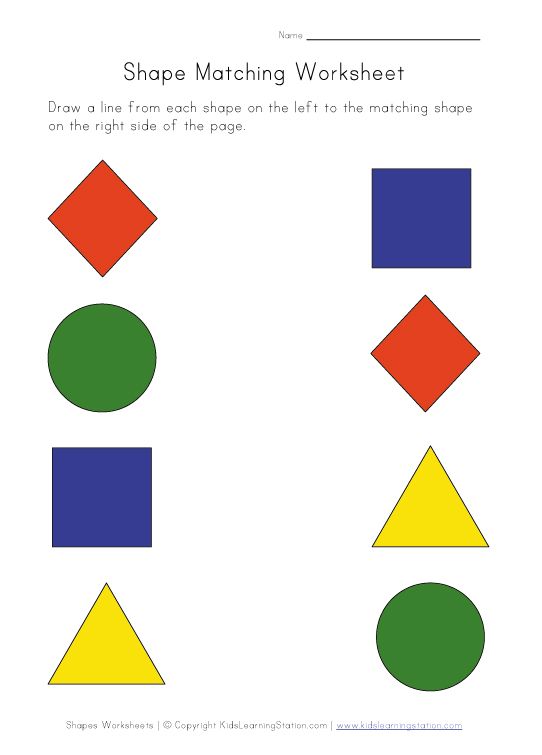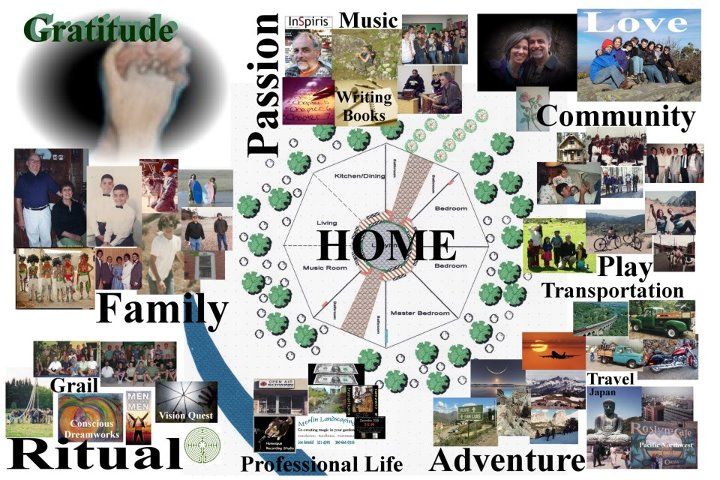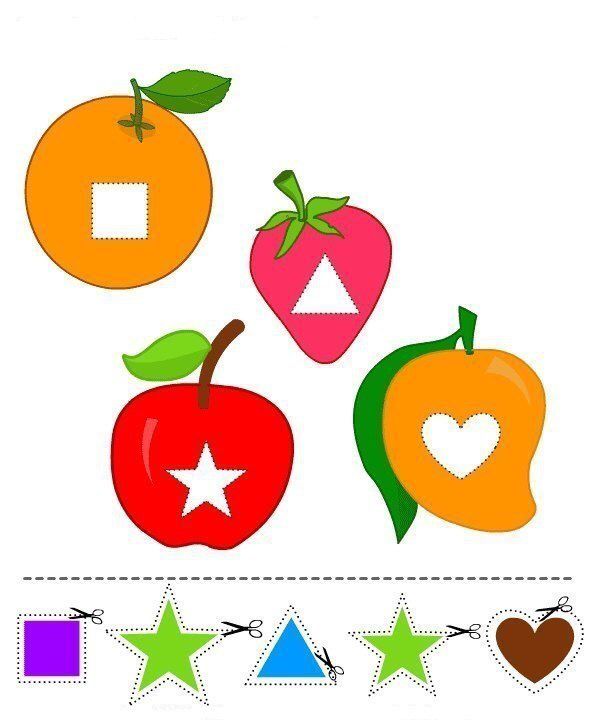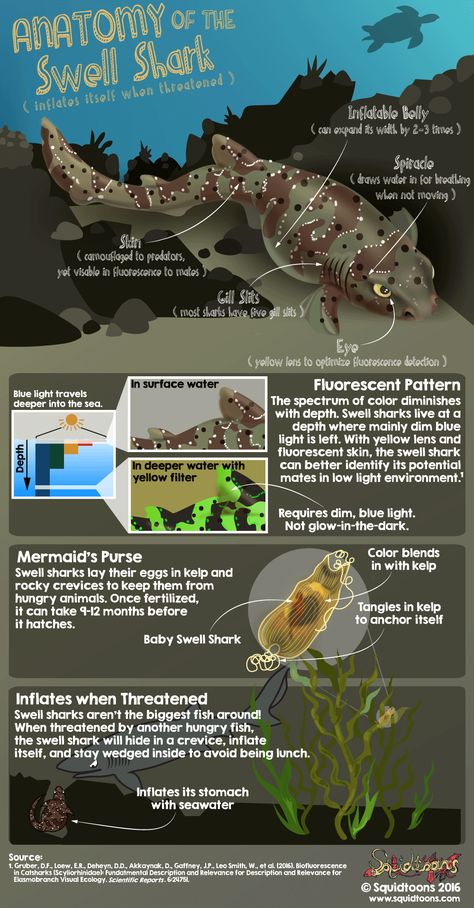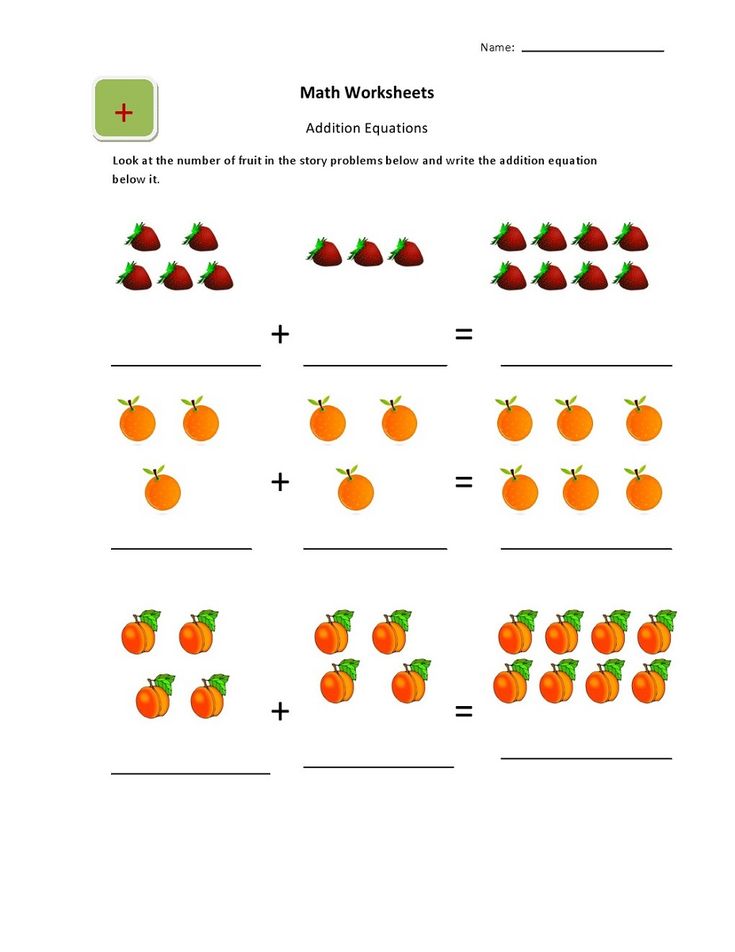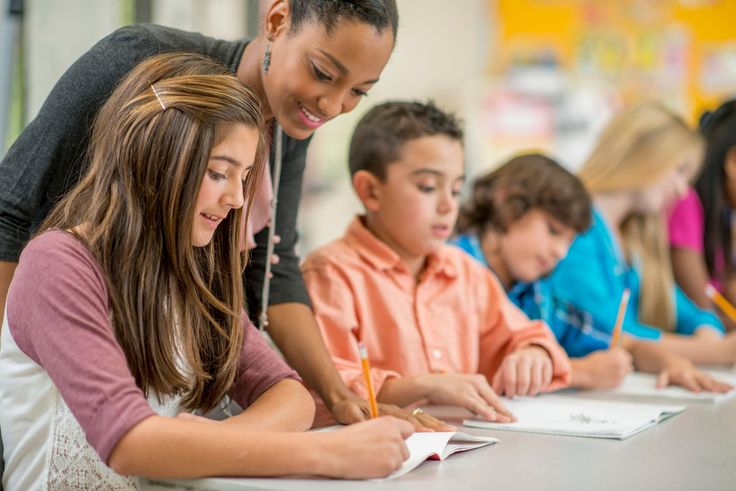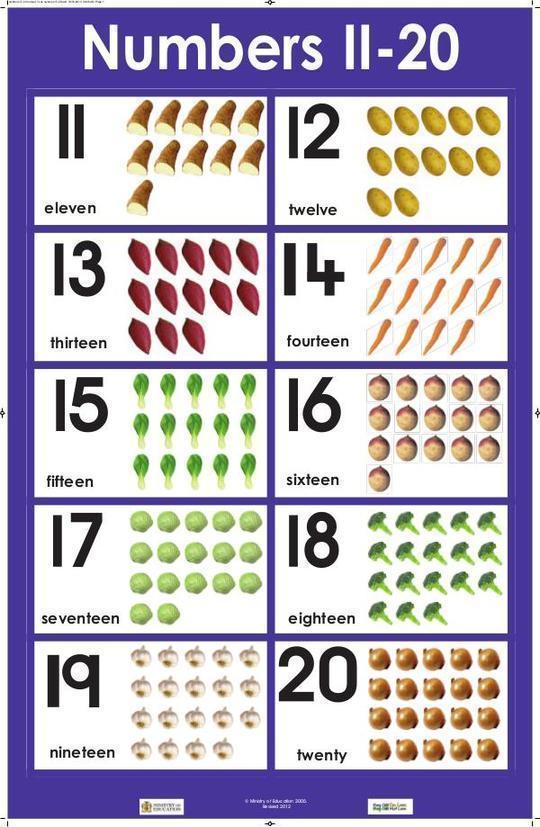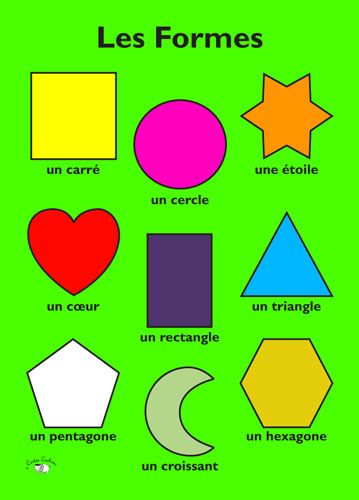Teaching shapes to children
13 Fun Ideas to Get Started
18 shares
- Share
- Tweet
Toddlers are always learning, and when your toddler is around two-years-old, it’s time to start teaching shapes to toddlers.
My toddlers always love to learn shapes, and with so many fun activities, you’ll find plenty of ways to teach your toddlers all the shapes. It’s best introduced as simple activities and games, along with shape toys that your child can enjoy for months.
Ready to get started? Here is what you need to know about teaching shapes to toddlers.
This post may contain affiliate links which I would receive a small commission should you make a purchase.
Why Teach Shapes to Toddlers
Have you ever looked around you and realized that shapes are one of the most noticeable attributes of the world around us? Teaching shapes to toddlers gives them a way to recognize and understand the world around them.
Learning shapes has several benefits for toddlers.
1. Same or Different
Are triangles and circles the same? Are these squares the same or different?
Discriminating same vs different is a big deal for toddlers, and it helps them start to visually discriminate and learn the world around them. Kids start learning how to scan their environment and notice important differences. It also helps your children follow directions better.
For example, you might tell your toddler to grab the blue circle on the floor. That’s much easier for them to understand than just saying get the toy on the floor.
2. Teaches Categorization
Looking and learning about shapes teaches your children about the attributes off objects. Children learn how to make observations about similarities and differences.
For example, toddlers might compare two different squares. He will notice they’re the same shape, but they might be smaller or different colors.
3.
 Works on Problem Solving
Works on Problem SolvingPlaying with a shape sorter helps your child determine where the blocks fit. This is an early example of problem-solving for toddlers.
Learning and discriminating shapes also works with spatial relation skills. Does the block fit into the same well? How do objects fit together? These are future math and science skills!
4. Early Math Skills
Shapes is a big part of early math skills. Building with blocks and working on shape puzzles are early geometry lessons. Your toddler learns geometric concepts like shapes, sizes, space, and position.
5. Early Letter Recognition
Shapes are also part of early letter recognition. Have you ever noticed the triangles made up A, V, and W? A circle is an O.
Learning about basic shapes helps your children learn about letter recognition and numbers, and it also helps them to draw shape, a precursor to writing.
6. Use Descriptive Vocabulary
Learning shapes helps to build your toddler’s descriptive vocabulary, encouraging your child to describe and express what they see.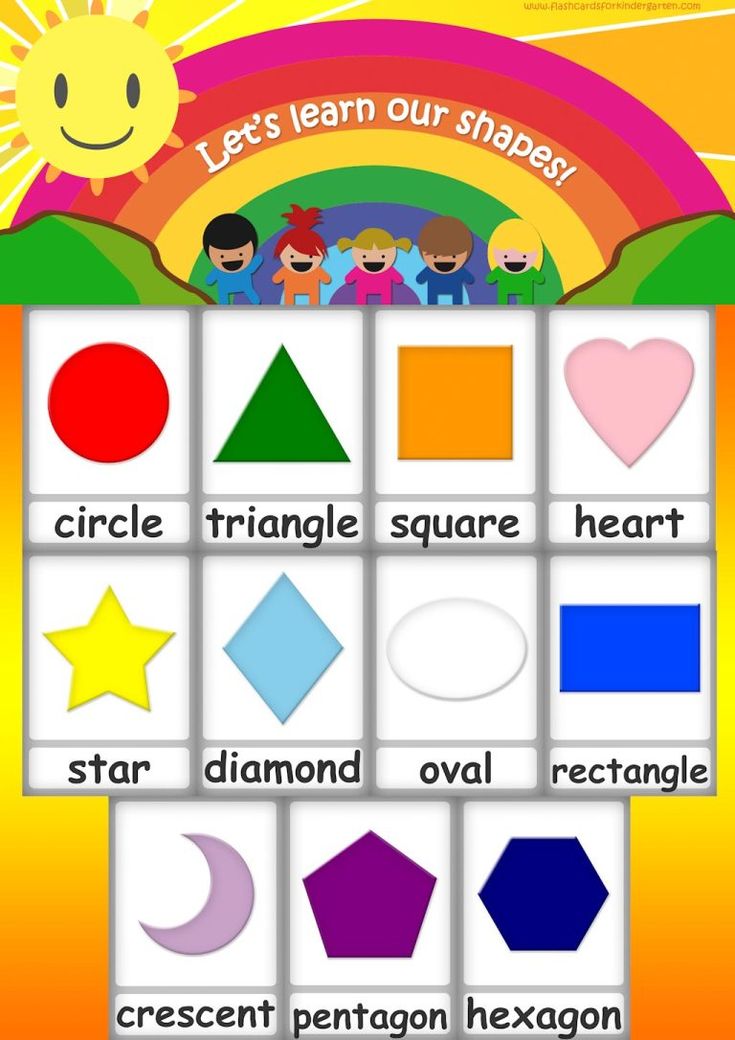
She might notice the square cookie (hey, it happens!), red flowers, or the triangle-shaped toy. This is a gradual step, but it’s an important benefit of learning shapes.
13 Tips for Teaching Shapes to Toddlers
1. Play with Shape Puzzles
One of my favorite ways to teach shapes to toddlers is to play with shape puzzles. While it’s good for your child to play with puzzles alone, make sure you take the time to play with them and give them the names of the shapes regularly.
There are all kinds of awesome shape puzzles that your toddler will love. If you have a toddler who is around one-year-old and you want to introduce shapes, the Melissa & Doug First Shapes Jumbo Knot Puzzle is perfect. It has easy-to-grasp knobs and an understandable picture for toddlers.
If you have a toddler who is a bit older, the Melissa & Doug Shapes Wooden Chunky Puzzle is perfect. The puzzle has eight shapes total and large, chunky shapes that is easy for toddlers to grasp.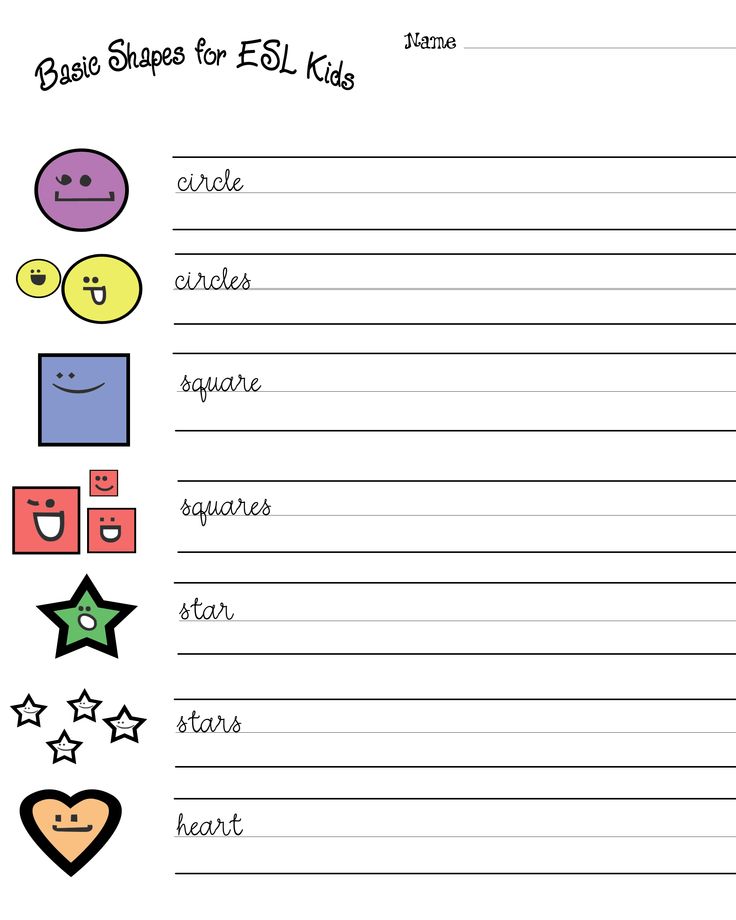
2. Be Repetitive
Repetition is a big deal. When your toddler is learning anything, you have to repeat the information several times.
Think about how many times you need to repeat directions, even for older kids!
Repeating the information for your toddlers is crucial, so when they hand you a puzzle shape, make sure you say the shape name. If you see a shape around the house – like the dining room table is a rectangle – make sure to tell your toddler!
3. Tracing and Coloring
One of the easiest tricks for teaching shapes to toddlers is tracing and coloring. Grab some crayons and let your child color some shapes.
If you can’t find coloring books that have shapes, there are plenty of shape printables or make your own. Toddlers aren’t picky at all!
4. Use Shape Sorters
I used to assume that shape sorters were an outdated toy that kid don’t need anymore – WRONG. Shape sorters give your child an opportunity to hold and learn the shapes, but it also works on problem solving skills.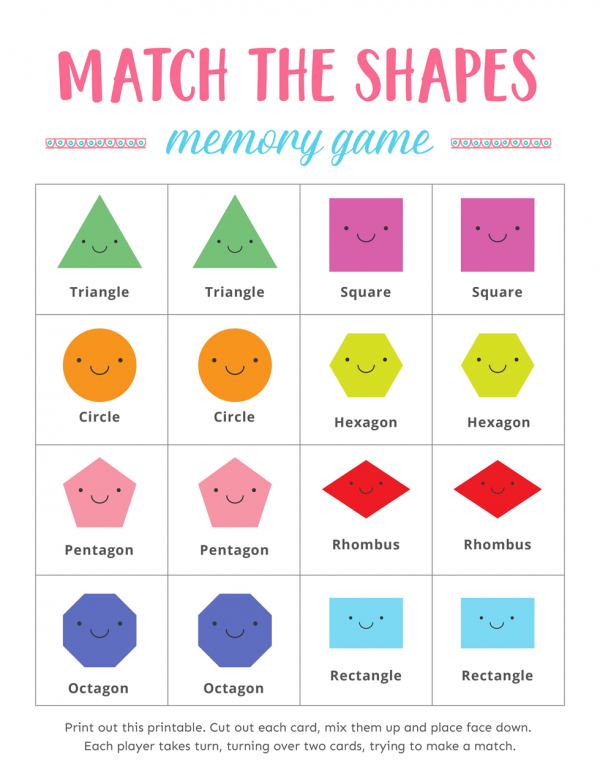
At first, take away a few of the shapes to reduce the overwhelm your toddler might feel as they learn the shape sorter.
If you don’t have a shape sorter at home, I love the Melissa & Doug Shape Sorting Cube . It’s a classic sorting cube with 12 different shapes, ideal for kids two to four years old.
5. Cut Shapes with Play Doh
What kids don’t love Play-Doh? My kids are totally obsessed, and it’s an easy way to keep them occupied and engaged in learning. We have several Play-Doh sets and accessories around our house; mama needs a break sometimes!
I found a large set of play dough accessories, and several of the cutters are shapes. Give your kids some tubs of Play-Doh and these shape cutters. Show them a shape and tell them to cut out a square or triangle.
Trust me; your toddlers will love this!
6. Find Shapes Around You
Shapes are everywhere, but it’s easy to adults to forget that. Toddlers need to understand that shapes are part of their world, so look for shapes around you.
Toddlers need to understand that shapes are part of their world, so look for shapes around you.
The table is a rectangle, a tall cup is a cylinder, the plate is a circle, and a cellphone is rectangle.
Shapes are everywhere, and parents need to point them out regularly. It helps your child know that learning shapes is a big deal!
7. Use Q-Tips to Build Shapes
One of the easiest ways to teach shapes is to build them with q-tips, something most people have and is super cheap.
Some shapes cannot be made with q-tips, like circles, but most can be made with them.
8. Draw Shapes with Sidewalk Chalk
We always have a bucket of sidewalk chalk sitting around, and it’s a great way to teach your toddler shapes. Draw the shapes with the chalk and tell your child the name of each shape. You can even call out shapes and have your child jump from shape to shape.
9. Don’t Learn Too Many at Once
Make sure you don’t introduce too many shapes at one time. That leads to overwhelm, and your goal is mastery. It’s impossible to master skills when the focus is spread out too thinly.
That leads to overwhelm, and your goal is mastery. It’s impossible to master skills when the focus is spread out too thinly.
10. Draw Shapes in Shaving Cream
If you’re worried that your toddler will eat the shaving cream, whipped cream or peanut butter are edible substitutions that work as well.
Spread the shaving cream over the table and have your child draw the shapes in the cream. You’ll need to show them the shapes first and how to draw them.
11. Use Geoboards
Geoboards are a fun little tool that I have for my toddlers. All you need is the geo board and some rubber bands. Then, they “build” the shapes on the boards.
It keeps them entertained for quite awhile, and it’s even fun for you to enjoy.
12. Paint the Shapes
Here’s an easy and fun idea for toddlers.
Cut out shapes from a kitchen sponge, dip them into washable paint, and stamp paper with the shapes. You can start off with one or two shapes and gradually build up to more sponge stampers.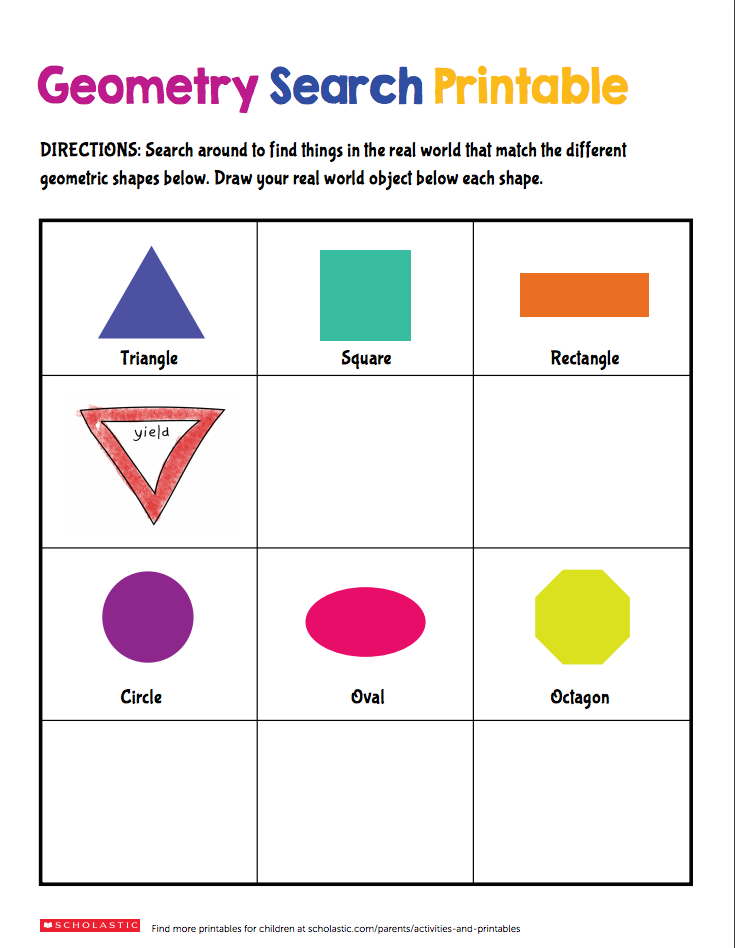
13. Shape Hunt
Try hiding shapes around a room for your toddler to find, or bury shapes in a box of rice or beans for your child to discover. Making a sensory bin with shapes is a great way to teach your toddler shapes while also engaging their other needs.
When Should Toddlers Learn Shapes?
Naming shapes takes longer to develop then learning colors. Children typically reach the stage when they can grasp the concept of shapes around two years old, but that doesn’t mean they’ll fully grasp shapes at that stage.
By the time your child is three to four years old, your child should be able to identify most of the basic shapes. Advanced shapes, like octagons, will be learned much later.
What Shapes Should a 2 Year Old Know?
An average two-year-old is just starting to learn shapes, so your child might not know any shapes yet. At this age, toddlers are starting to learn the basic shapes like circle, square, triangle, and rectangle.
What Shapes Should I Teach First?
Start by teaching your child the most common shapes: squares, circles, and triangles.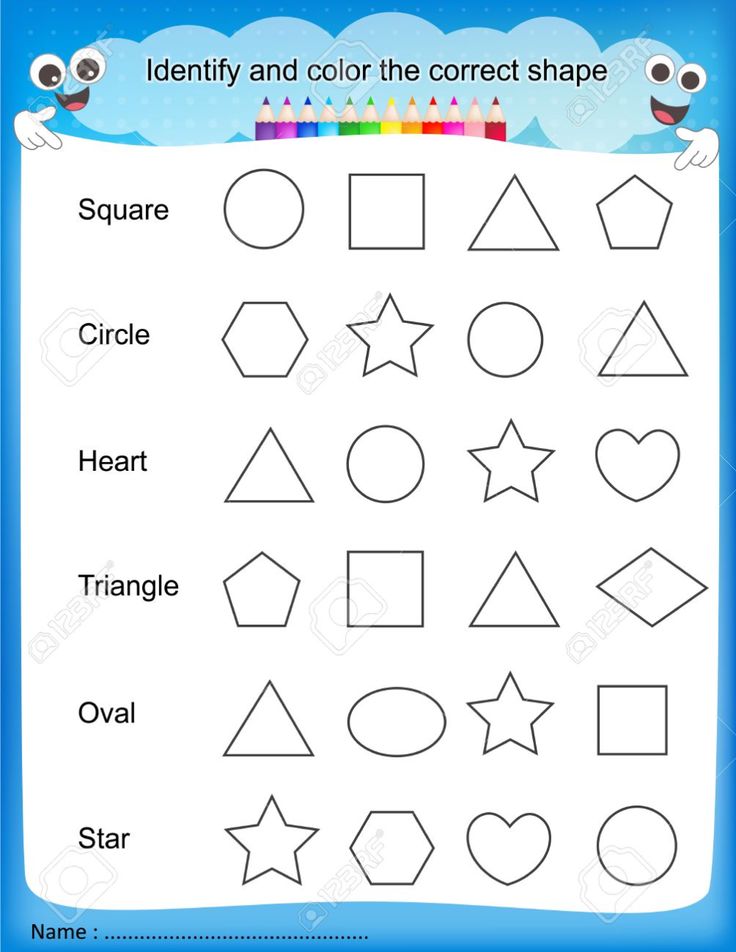 After your child understands these three shapes, move to rectangles, stars, diamonds, and ovals.
After your child understands these three shapes, move to rectangles, stars, diamonds, and ovals.
Teaching shapes to toddlers should be fun and engaging; this shouldn’t be sit-down lessons that bore your child. Focus on making learning shapes as fun as possible and remember that repetition is necessary to help your toddler learn the names of the shapes.
Related posts:
11 Activities to Teach Basic Shapes to Young Children
This post may contain affiliate links. If you purchase something through one of the links, we may receive a commission at no extra charge to you. Still, we would include only products we actually trust and believe will be helpful for you.
Did you know that helping children learn shapes promotes a strong foundation for both math and literacy?
Identifying, categorizing, and creating shapes help young children gain mathematical reasoning skills in their early childhood years that will set them up for success later in school.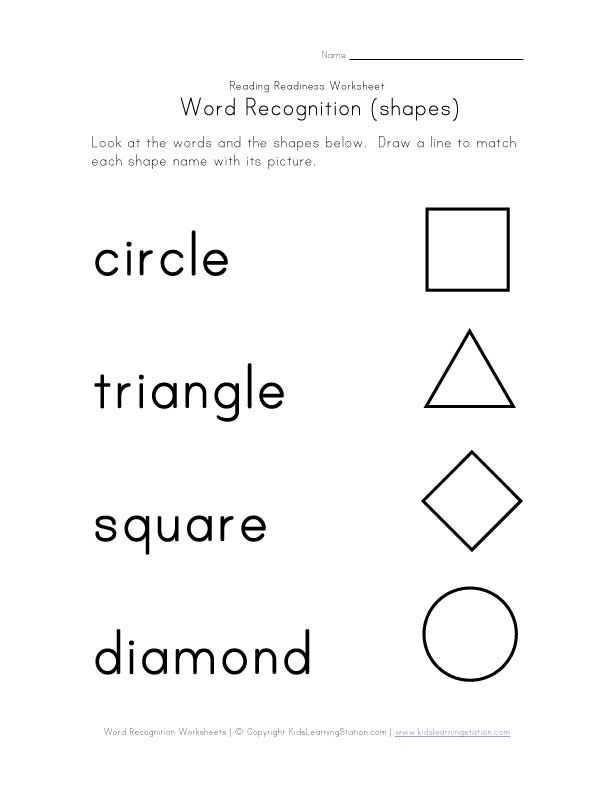 It also builds background knowledge needed for learning the alphabet. (Who knew a triangle or a circle had so much power?!)
It also builds background knowledge needed for learning the alphabet. (Who knew a triangle or a circle had so much power?!)
Teaching basic shapes is one of the most fun learning objectives for teachers and parents alike, in part because there are endless ways to do it! You can use anything and everything from wooden blocks to puzzles to magnetic tiles. Simple cutouts from construction paper or felt fabric also work great. If you can imagine it, you can do it. (And your child can, too!)
Young ones learn best through imaginative play and active engagement. So, as you think through when, where, and how to do shape activities with your child, keep in mind that the most effective learning occurs when children take an active role.
Table of Contents
- When to Introduce Shapes
- Why Teach Shapes to Young Kids?
- What Shapes to Start With
- Activities for Teaching Shapes to Kids
- Conclusion
When to Introduce Shapes
It is never too early to introduce basic shapes, just as it is never too early to introduce talking, singing or reading.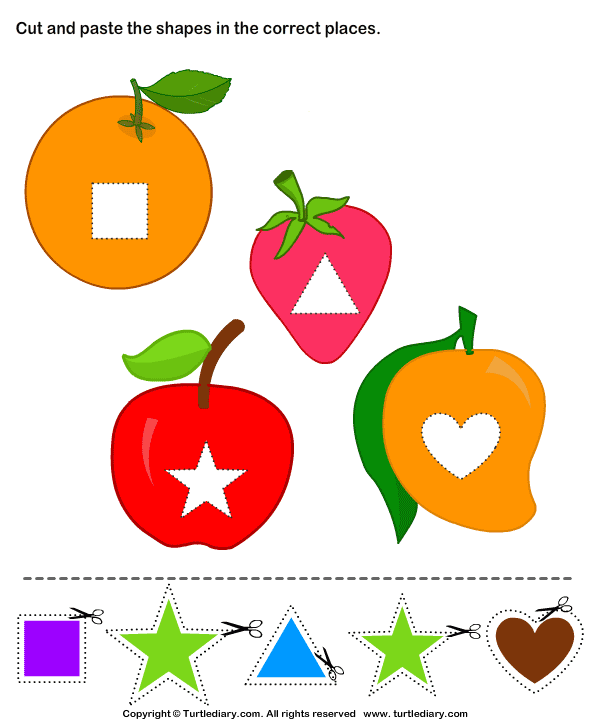
Children begin learning about the world around them from as early as infancy. In the very early years, babies absorb information by watching and listening to the people and events in their sight. Young children are drawn to the contrast of black and white picture books – this is one great tool for teaching basic shapes to your very young child.
As they grow into toddlers and preschoolers; puzzles, blocks, magnetic tiles, and various arts and crafts activities are excellent ways to teach shapes. Children as young as two may be ready to learn basic shapes like circles, squares, and triangles.
Please keep in mind, though, that all children develop at different paces. The activities we will share provide entry points for children at all readiness levels – from pre-reading toddlers who know just a few words to elementary schoolers ready for enrichment.
Why Teach Shapes to Young Kids?
Shapes provide a powerful foundation for learning. Identifying, classifying, and creating basic shapes helps kids develop a strong basis for mathematical reasoning and literacy. They also help children learn across content areas because they:
They also help children learn across content areas because they:
- Provide an introduction to symbols
- Serve as a precursor to recognizing and differentiating among letters & numbers
- Teach symmetry
- Introduce patterns
- Present opportunities to practice comparison and classification
- Encourage mathematical problem-solving
- Organize & categorize visual images
That is a lot of learning!
Did you know your toddler is building a foundation for strong visual-spatial reasoning when she builds with her colorful wooden blocks? Your preschooler is learning to read not only by listening to stories and practicing with letters, but also by sorting shapes!
Teaching shapes should be an ongoing endeavor that both teachers and parents support. You can always be teaching and reinforcing basic shapes, even if you’re not sitting down for a special shape activity. Pointing out where you see prime shapes in your everyday life is a great place to start.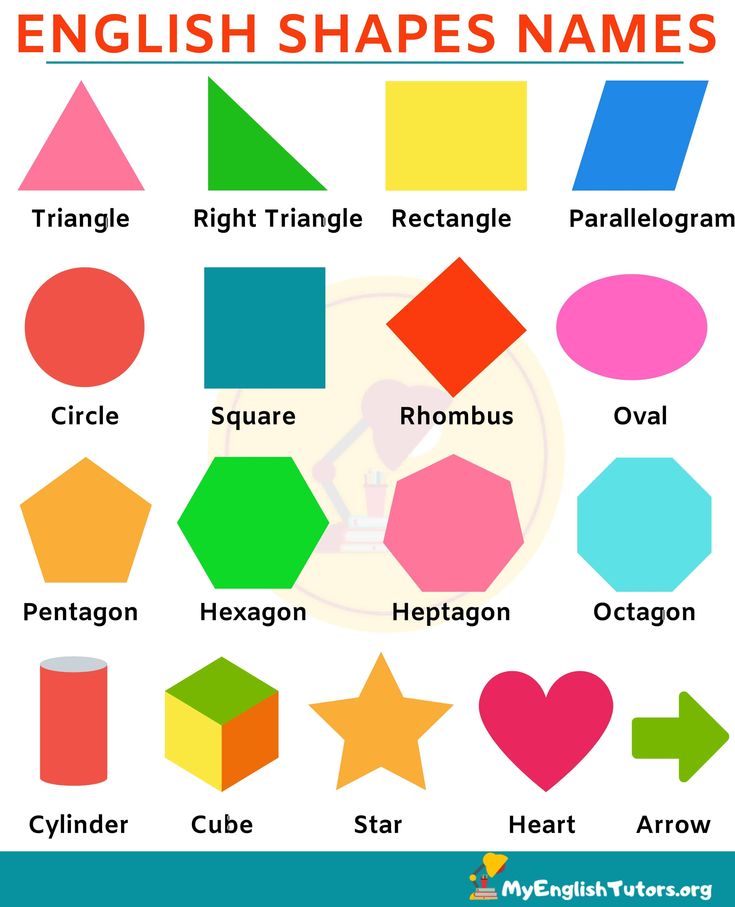
What Shapes to Start With
There is no universal rule about which shapes should be introduced first, second, third, etc. But, early childhood teachers typically begin with the most 2D familiar shapes. These include the circle, triangle, square, rectangle and oval.
These shapes are easy for kids to identify in the real world and through toys. As you go about your day, help your child notice the shapes as they occur naturally.
For example, the bottom of your coffee cup is the shape of the circle. Your kitchen window may be shaped like a square. The cereal box at the breakfast table is probably shaped like a rectangle. When you spend time noticing the shapes of common household objects, your child will begin to notice them, too. Encourage this! Celebrate this!
The different sizes and orientations of these “real world” shapes will help expand your young child’s mathematical thinking abilities. She will be able to recognize that not all triangles are equilateral, for example.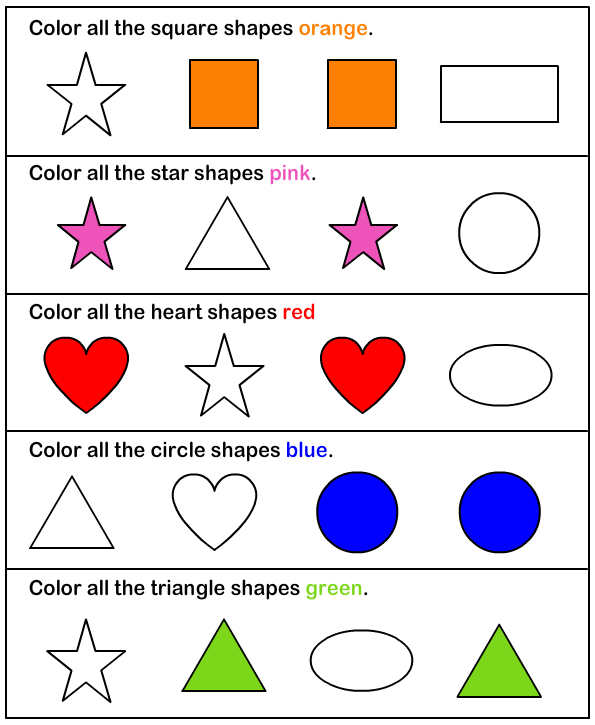 Some rectangles are “tall” and others are “long,” and ovals vary in length.
Some rectangles are “tall” and others are “long,” and ovals vary in length.
Most children’s toys include basic shapes like circles and rectangles. They may be found in knob puzzles, picture books, coloring pages, and magnetic tiles. They may be in different colors and textures, but retain the same recognizable form. These basic shapes are a great place to start with your toddler or preschooler.
Other shapes with more complex attributes, such as hexagons and parallelograms, may be introduced later in elementary school or with younger children who show mastery of identifying and manipulating beginning shapes. As your child shows signs of being ready for more advanced shapes, be sure to use correct mathematical language (like angles, sides, and parallel) to help reinforce her teacher’s instruction.
Activities for Teaching Shapes to Kids
To help your child learn to identify basic shapes, try a variety of activities to engage her in active learning and imaginative play. If one activity seems to fall flat, no worries! Try another one. You are sure to find a few fun, hands-on activities that light up your child’s love for learning.
If one activity seems to fall flat, no worries! Try another one. You are sure to find a few fun, hands-on activities that light up your child’s love for learning.
1. Sorting
One of the best ways to teach shapes is through sorting activities. You can use just about any toy or material to help children sort. Wooden blocks, foam blocks, and magnetic tiles all work great. Even cut-out 2D card stock shapes will be effective!
Modeling works for most children so they can see how to engage with the activity. Show them how to put rectangles in one pile and circles in another pile. Hold up a toy and look at it, and say:
“I see this shape is round. It must be a circle! I’ll put it in this stack.”
Then, hold up another toy, and offer a different observation,:
“This shape has corners. It’s different from the circle. I’ll put it over here.”
Take care to use age-appropriate math language, naming the shape and offering helpful observations about their attributes.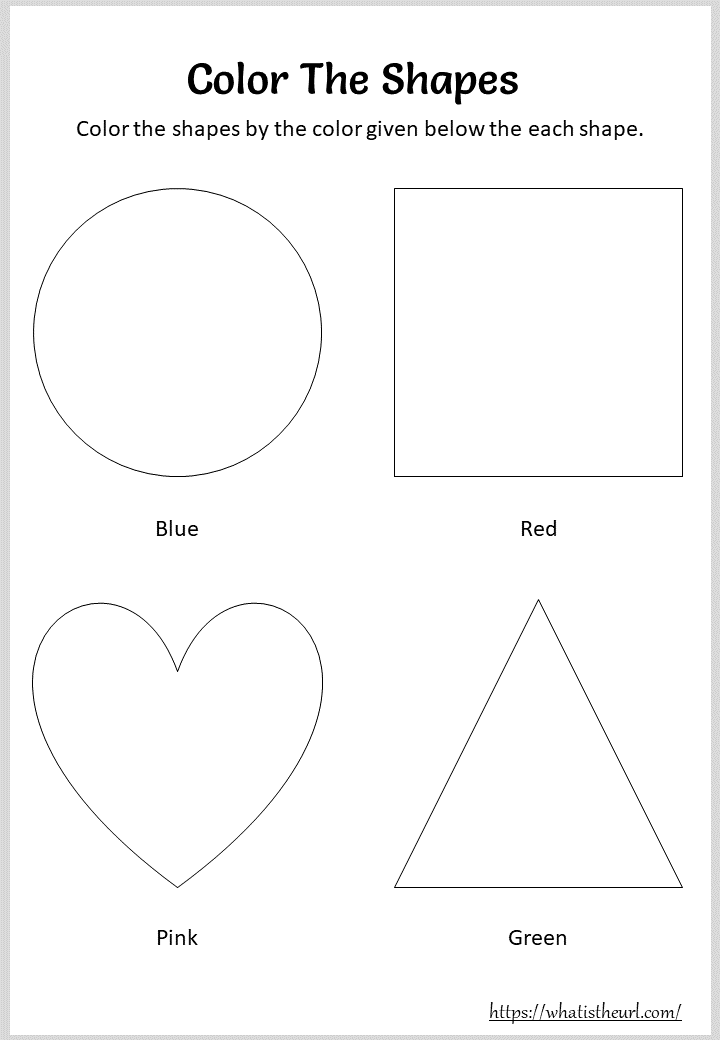 This helps children build a foundation for math vocabulary and learn to compare visual images. After a couple of examples, let your child explore the toys or materials independently. It’s OK if he makes mistakes – that’s how children learn.
This helps children build a foundation for math vocabulary and learn to compare visual images. After a couple of examples, let your child explore the toys or materials independently. It’s OK if he makes mistakes – that’s how children learn.
For very young children, it may be helpful to have all the circles be one color, all the rectangles a different color, all the squares another color. This will help reinforce the idea of “same” and “different” if some of the shapes are of different sizes. Your child will know a “fat” oval is still an oval if all the other ovals are blue and the shape he is holding in his hands is also blue.
2. Matching
Matching is another excellent way to help children learn shapes. Just like with sorting activities, you can use almost any toy or material for matching.
- Encourage your child to match puzzle pieces that are the same shape.
- Try matching felt, sandpaper, or cardstock cut-out shapes to promote multi-sensory learning.

- Use markers or crayons to color matching shapes in a shape collage on a coloring page.
3. Inset Puzzles
Inset puzzles with a variety of shapes and bright colors are a great way to help children become familiar with introductory shapes.
Many inset puzzles (especially knob and chunky puzzles) include the basic shapes like circle and square. They also come with more advanced shapes such as letters, numbers, fruits, vehicles, and animals.
As you work with your toddler or preschooler on these puzzles, be sure to say the name of the shape as you help or watch her manipulate the puzzle piece.
4. Magnetic Tile Shapes
Use magnetic tiles to help kids learn to orient shapes in different positions and create new, larger shapes from smaller ones.
Unfortunately, many children’s books and early teaching materials present 2D shapes in only one familiar position. When children see the shape in an ‘unusual’ position, they may struggle to recognize it as a shape they know because they don’t have a deep understanding of its properties.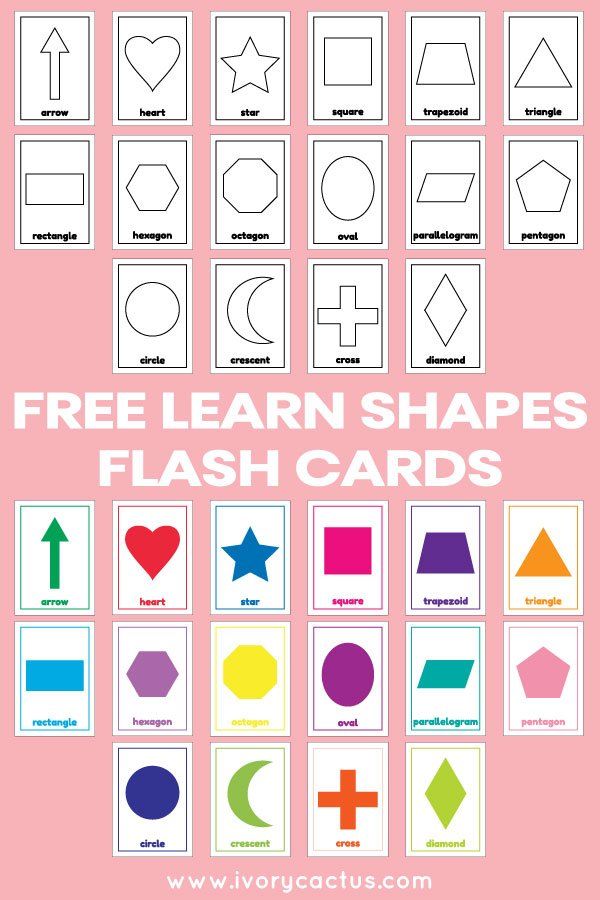
For example, children might recognize equilateral triangles as triangles but be confused by right isosceles or obtuse scalene triangles, simply because they have never seen a 3-sided shape positioned with such angles. Of course, young kids will not know or understand the different mathematical names of triangles, but using a variety of materials (like magnetic tiles) to learn shapes lays a strong foundation for visual and spatial reasoning.
Playing with 2D magnetic shapes also helps children see how shapes can be rotated, reflected, and flipped.
- Long, flat rectangles can turn into tall, skinny rectangles! (And it’s still a rectangle!)
- Magnetic squares can be stuck together to make a 3D cube!
- Two magnetic squares joined together makes one rectangle!
And on and on go the possibilities for learning to see shapes in a broader context. Magnetic tiles are an open-ended toy that offer hours of imaginative play and learning fun for children of all ages.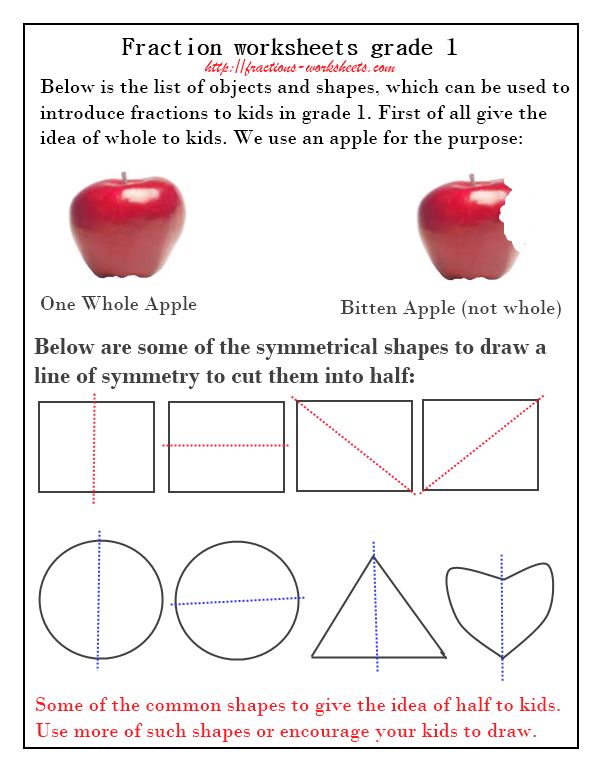
5. Drawing
Never underestimate the power of a simple piece of paper and a pencil. Some children just love to draw.
If your child likes drawing, encourage them to practice drawing shapes. You may also provide a ruler or other straight edge to help them draw shapes with neat lines and perpendicular angles.
An older child may enjoy measuring the length of the sides of her shapes and creating shape-pictures, like robots or other objects made of recognizable 2D shapes.
For an extension activity, offer a challenge of creating a specific object, like an animal, made only of polygons, for example.
Alternatively, you could allow your kid to draw using chalk instead of a pencil. This is a quick and easy activity to set up that requires minimal adult intervention.
If needed, you can offer a few example shapes to help your child get started, and then sit back and watch how he creates. Maybe your child will make a field of flowers whose petals are made of ovals and stems are made of thin rectangles.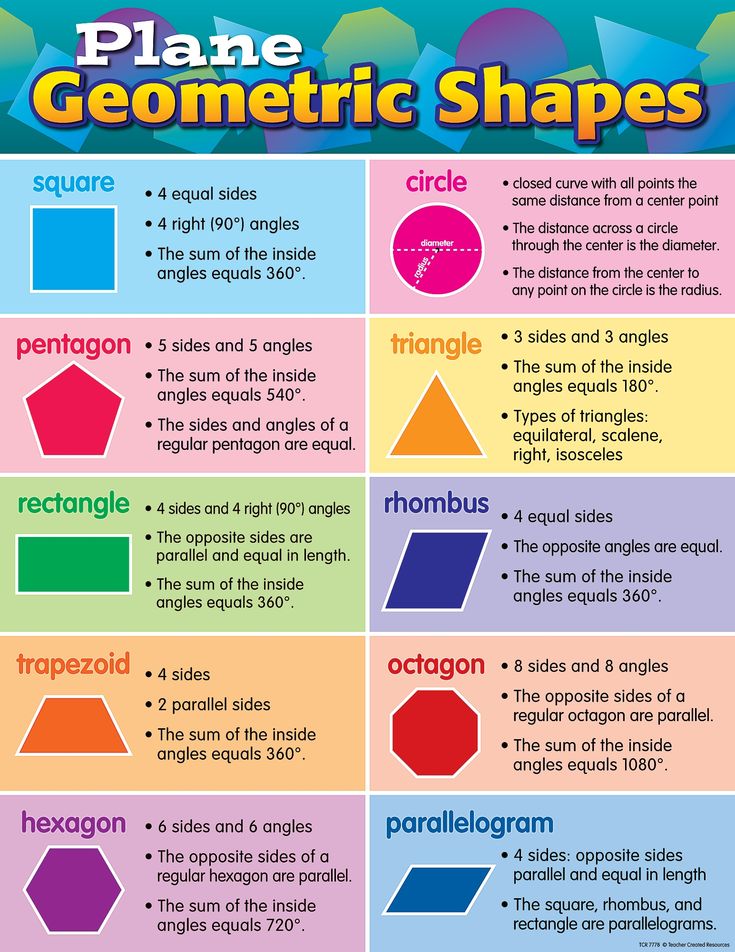 Or perhaps your child will draw one ‘wobbly’ square and then scribble inside it. Either way is OK.
Or perhaps your child will draw one ‘wobbly’ square and then scribble inside it. Either way is OK.
Note: some children may need extra help grasping the chalk or drawing lines if their fine motor skills are still developing.
6. Shapes Collage
This is a favorite activity for young children. A shapes collage is simply a compilation of shapes. Details can be filled in however you wish!
- Use stencils or stamps or free-hand drawing to create a collage of shapes on construction paper
- Pre-cut a handful of shapes and help your child glue them onto paper
- Use tissue paper and mod podge to create a textured collage (best for ages 5 and up)
- Make a color-themed shape collage to celebrate a holiday, such as a red, pink, and purple heart collage for Valentine’s Day, or black and orange circles and rectangles for Halloween
And if you’re in a hurry, you could buy some ready shapes for your kids to use to quickly create collages.
7.
 Playdough Shapes
Playdough ShapesWho doesn’t love playdough?
Toddlers love playdough. Preschoolers and elementary school kids love playdough. And lots of adults enjoy a bit of playdough play, too!
Whether you use die-cuts to stamp playdough shapes or free form play, this moldable magic offers endless opportunities to create shapes with your children.
Try making animals or food or tools or anything you wish. Of course the shapes won’t be perfectly straight or round, but you will still have plenty of opportunities to notice the shape and nature of your creations:
“Your worm looks like a very long, skinny oval!” or
“Your food truck is shaped like a squiggly rectangle!”
8. Sensory Tables
A sensory table is essentially any large bin that is filled with special sensory materials. Some of the more common fillings are:
- Water
- Soapy water
- Sand
- Dry beans
- Rice
- Dry cereal
- Dry pasta noodles
- Snow
- Whipped cream
- Shaving cream
- Even dirt
Choose any filling that suits your child and your own tolerance for a little mess.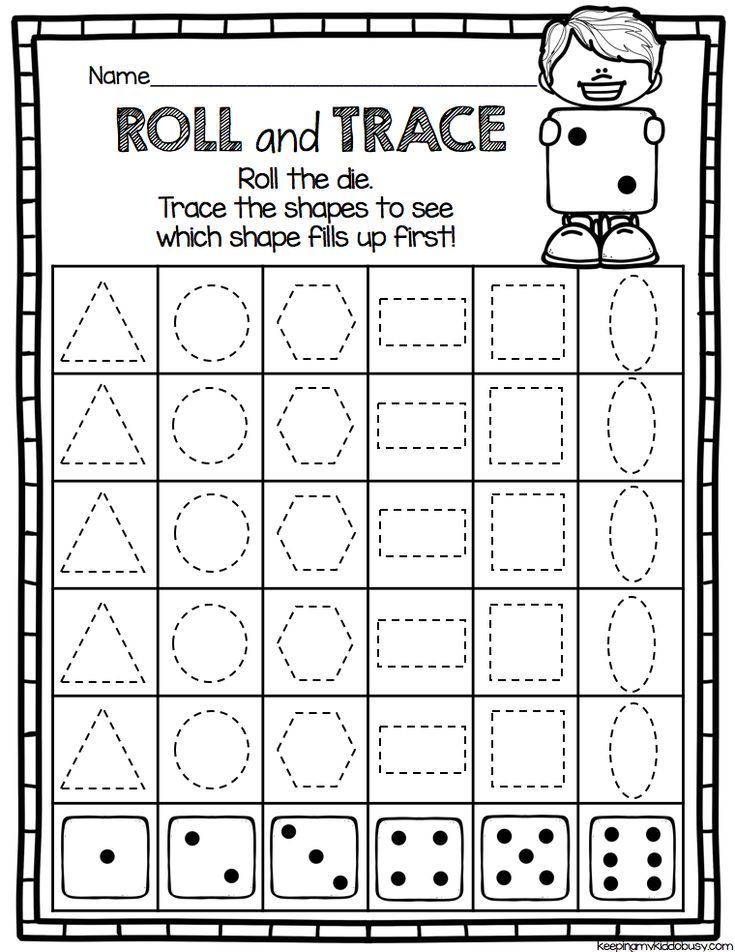 Then, find or create shapes that you can put into the filling.
Then, find or create shapes that you can put into the filling.
One place to start it by putting cut-out shapes or magnetic tiles into a sensory table full of sand or dry rice. As you become more familiar with sensory play and how to manage materials, experiment with shapes of different textures, colors, sizes, and attributes.
The purpose of using sensory tables is not to practice memorization or recall but rather to encourage your child to engage all of her senses while increasing creativity and independence.
In case you don’t have a suitable bin to use, you may buy one such as this table.
9. Play Hopscotch with Shapes
Do your children get antsy after too much time indoors? If so, bring the learning outside!
Use chalk to create a simple hopscotch template on your driveway, sidewalk, or porch. But, instead of using numbers to fill in the squares, use shapes!
You can play hopscotch with shapes in as many ways as you can imagine. To start, try having your child simply hop from square to square and name the shape she lands on.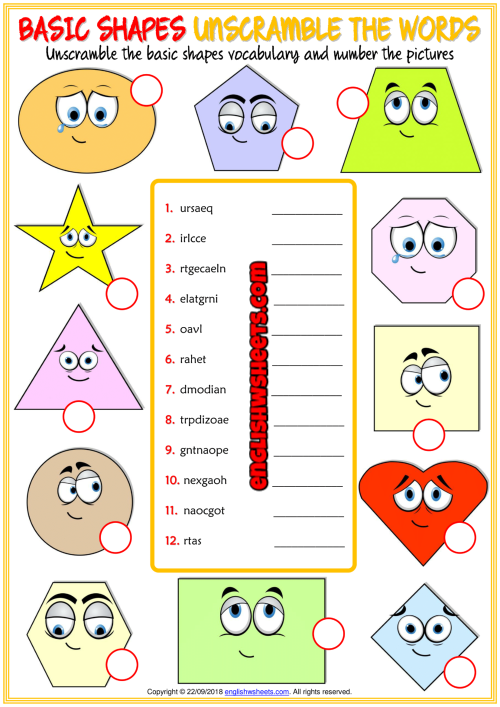 Then, introduce a challenge by inviting her to hop only to shapes with 3-sides, or to make a pattern in her hops by moving from circles to 4-sided shapes.
Then, introduce a challenge by inviting her to hop only to shapes with 3-sides, or to make a pattern in her hops by moving from circles to 4-sided shapes.
When children invent the rules for their own play, they are more engaged and for longer periods of time. So, encourage your child to make up her own rules, too!
10. Geoboard Shapes
Geoboards are a great math tool for introducing length and width in 2D shapes.
Many early elementary school teachers use geoboards to help children learn to create their own 2D shapes with rubber bands around the individual pegs. Creating is a higher level of thinking than recognizing and naming them from a picture.
Geoboards are also a very helpful way to introduce the concept of perimeter and area.
If your child is ready for this kind of learning, go for it!
11. Printouts and Worksheets
While children learn best through play, there is a time and place for worksheets, too. It is important to be able to sit for a few minutes at a time and work on an activity with pencil and paper.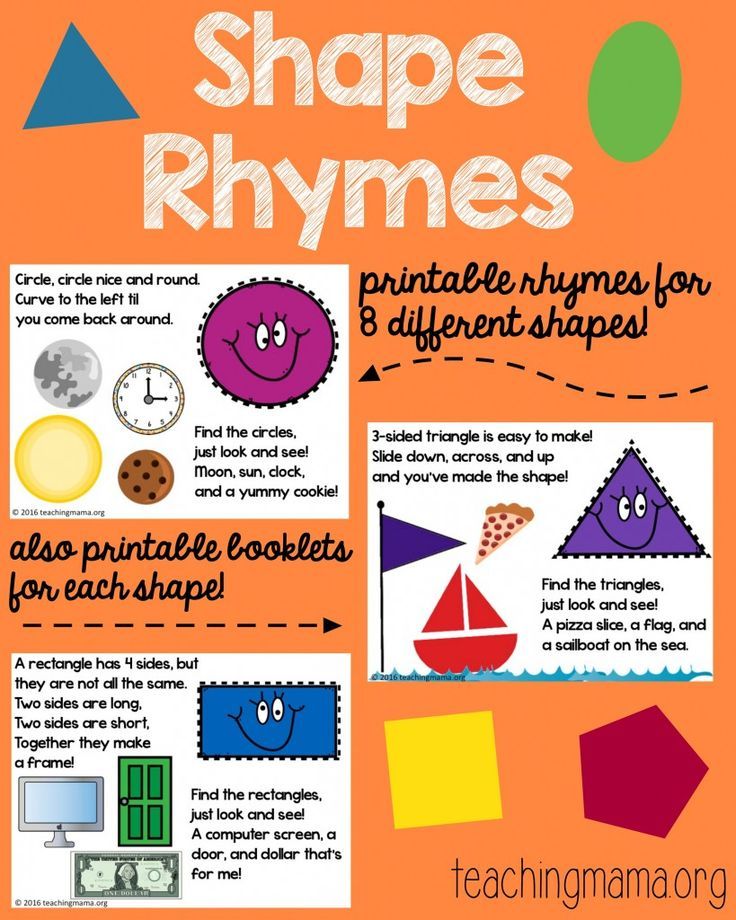
If your child is 5 or 6 years old or older, offer printouts from time to time to help them practice their shape identification and classification skills. They may practice writing the names of the shapes, drawing the shapes, sorting/matching the shapes or measuring the shapes.
Younger children (toddlers and preschoolers) can also work with basic paper to learn shapes. Instead of writing with pencils, try using shape stamps, or provide markers or paint to practice following instructions. Maybe they will color all the circles blue and paint a red dot in all the squares.
ConclusionTeaching shapes can be a joyful, energizing activity for both adults and children.
With just a bit of planning, teachers and parents can introduce basic shapes to young children through a world of creativity and fun. Guided hands-on activities like play dough creations and shape collages are the best way to facilitate learning shapes for kids of all ages, especially the littlest ones!
Spread the word!
Learning Geometric Shapes: Games for Preschoolers
One of the important aspects of the development of mathematical concepts in preschoolers is the study of the basics of geometry.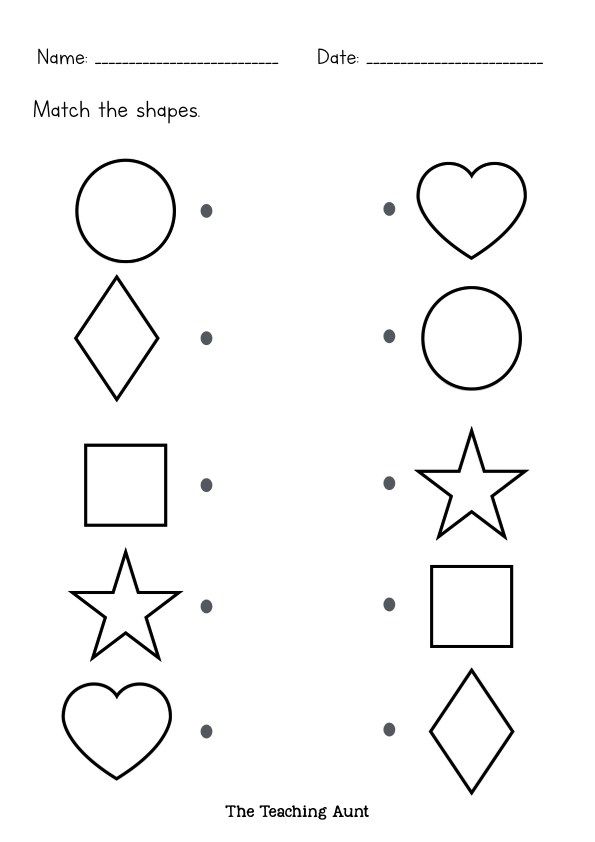 In the course of acquaintance with geometric shapes, the child acquires new knowledge about the properties of objects (shape) and develops logical thinking. In this article, we will talk about how to help a preschooler remember geometric shapes, how to properly organize games for teaching geometry, and what materials and aids can be used to develop a child’s mathematical abilities.
In the course of acquaintance with geometric shapes, the child acquires new knowledge about the properties of objects (shape) and develops logical thinking. In this article, we will talk about how to help a preschooler remember geometric shapes, how to properly organize games for teaching geometry, and what materials and aids can be used to develop a child’s mathematical abilities.
At what age can one start learning geometric shapes?
Many parents are wondering if young children need to get acquainted with geometric shapes. Experts believe that it is optimal to start classes in a playful, relaxed form from the age of 1.5. Until this age, it is appropriate to pronounce to the child the names of the shapes of objects that the baby meets in real life (for example, “round plate”, “square table”).
Introducing the child to geometric shapes, be guided by his reaction. If your baby started to show interest in them at an early age (by playing with the sorter or looking at pictures), encourage his curiosity.
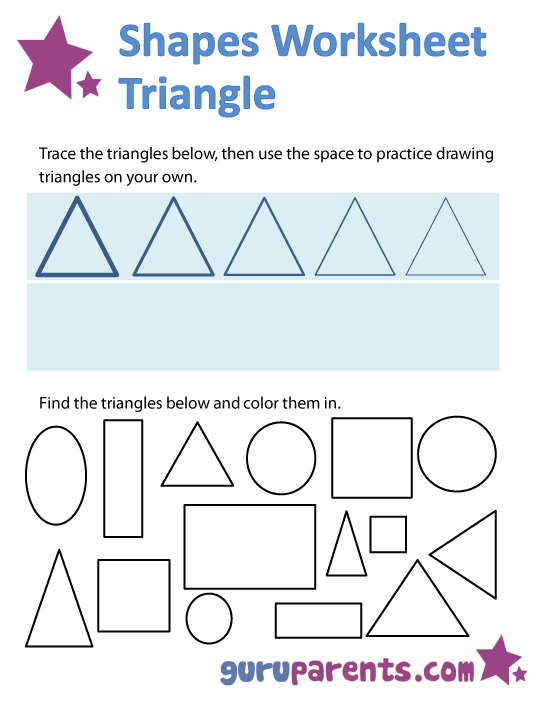
At the age of 2, the baby should be able to distinguish between:
- Circle;
- Square;
- Triangle.
By the age of 3 you can add:
- Oval;
- Rhombus;
- Rectangle.
At an older age, a child can memorize such shapes as a trapezoid, a pentagon, a hexagon, a star, a semicircle. Also, children visiting the Constellation Montessori Center get acquainted with geometric bodies with interest.
How can I help my child remember geometric shapes?
Teaching a child geometric shapes should take place in stages. You need to start new figures only after the baby remembers the previous ones. The circle is the simplest shape. Show your child round objects, feel them, let the baby run his finger over them. You can also make an application from circles, mold a circle from plasticine. The more sensations associated with the concept being studied, the child receives, the better the baby will remember it.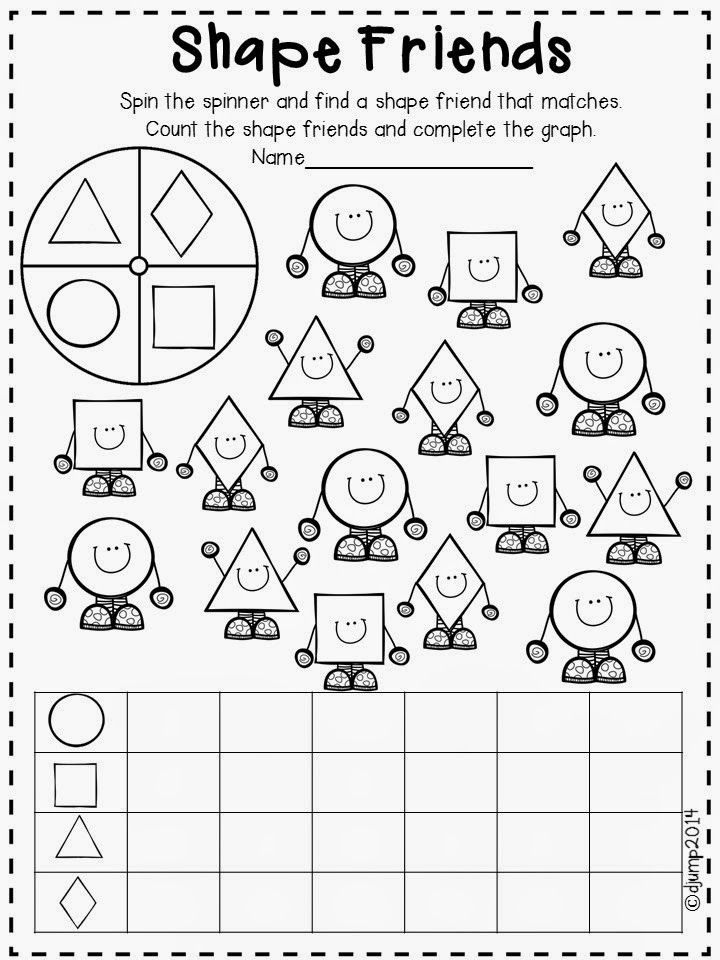
Three-dimensional figures can be used to get acquainted with the forms. It can be made by a designer, a sorter, lacing, frame inserts. Since at an early age the visual-effective type of thinking is most developed, various actions with figures will help to remember them better.
How children of different ages perceive geometric figures
The operations that a child can perform with geometric figures and how he perceives shapes depend on the age of the baby. In accordance with age characteristics, the following stages of training can be distinguished:
- In the second year of life, the baby is able to visually recognize familiar figures and sort objects according to shape.
- At 2 years old, a child can find the desired shape among a number of other geometric shapes.
- By the age of 3, babies can name shapes.
- At the age of 4, a child is able to correlate three-dimensional figures with a flat image.

- At senior preschool age (and sometimes even earlier) you can start studying geometric bodies (ball, cube, pyramid). Also at this age, the child can analyze complex pictures consisting of many shapes.
Regardless of the child's age, try to pay attention to the shapes of the surrounding objects and compare them with known geometric shapes. This can be done at home and on the go.
Games for learning geometric shapes
For a child to be interested, learning geometric shapes should take place in a playful way. You should also select bright and colorful materials for classes (you can buy them in a store or do it yourself). Here are some examples of games and tutorials for learning geometric shapes:
- Sorting. Games with a sorter can be started from the age of 1. Invite the child to find its window for the figure. So the child will not only memorize geometric shapes, but also develop fine motor skills, thinking and spatial representations, because in order for the part to fall into the hole, you need to turn it at the right angle.
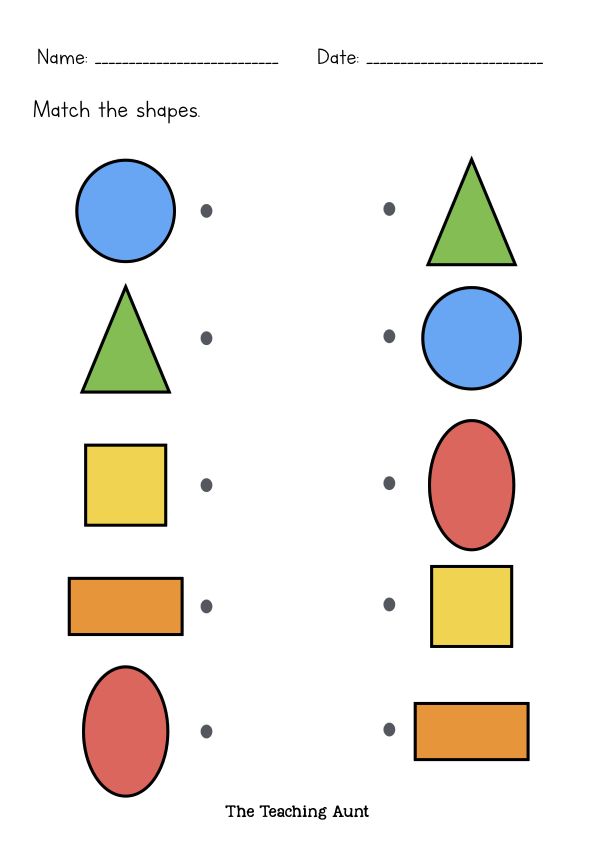 You can also sort any other items, such as building blocks, Gyenesch blocks, or counting material.
You can also sort any other items, such as building blocks, Gyenesch blocks, or counting material. - Insert frames. In fact, this manual is similar to a sorter. For each geometric figure, you need to find its place.
- Geometric lotto. To play, you will need a field with the image of geometric shapes and handout cards with each figure separately. A child can take small cards out of a chest or bag, and then look for their place on the playing field. This game also perfectly trains the attention of the baby.
- Geometric appliqué. Cut out various geometric shapes from paper and, together with your child, make a picture out of them (for example, you can make a Christmas tree from triangles, a house from a square and a triangle).
- Drawing (including stencils).
- Modeling.
- Laying out figures from counting sticks.
- Geometric mosaic.
- Laces with geometric shapes.
- Card games.

- Guess by touch.
- Active games. Draw geometric shapes on the pavement with chalk. Ask the child to imagine that the figures are houses that you need to run into on a signal. Next, you name a geometric figure, and the child runs to it.
In addition, educational cartoons can be used to study geometric shapes. Here is one of them:
Conclusions
Learning the basics of geometry at preschool age is an important part of developing a child's mathematical and sensory representations. Acquaintance with the figures should occur gradually (first, simple figures - a circle, a square, a triangle). To keep your child interested, study geometric shapes in a playful way. Your assistants in this can be such educational aids as insert frames, mosaics, lotto, sorters, sets of geometric shapes and bodies, stencils.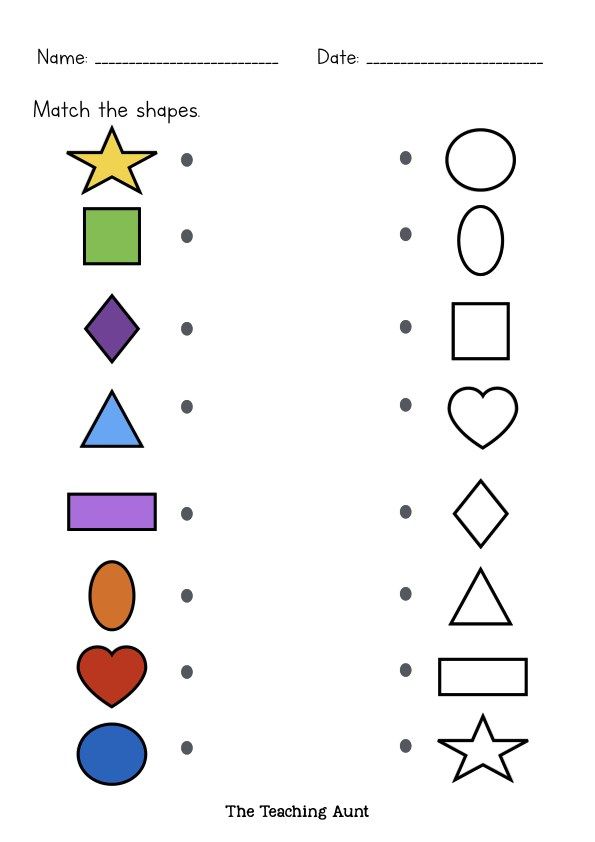 You can also study geometric shapes on the street: just talk to your child about what you see around and what shapes these objects look like. Then the kid will definitely learn to distinguish geometric shapes and remember their names.
You can also study geometric shapes on the street: just talk to your child about what you see around and what shapes these objects look like. Then the kid will definitely learn to distinguish geometric shapes and remember their names.
Conclusion
Montessori environment has been specially created for the comprehensive and harmonious development of each child in the children's center "Constellation". In the process of free work in it, children not only get acquainted with the basics of geometry, but also develop their cognitive processes, fine motor skills, learn to write, read, and count. In addition, the Montessori environment gives the child the opportunity to fully demonstrate independence and responsibility. We will be glad to see you and your baby at our center!
Prepared by a Montessori teacher
Malysheva Evgenia
Do children need geometric shapes?
Why teach a small child geometric shapes? Surely, many parents do not even think about this issue, simply paying tribute to fashion and teaching mathematics to the baby almost from birth. Meanwhile, geometric shapes for children, their timely study play a big role in the knowledge of the environment, introducing one of the main properties of objects - shape. This is necessary for the development of logical thinking, spatial representations, and the improvement of mathematical abilities. That is why it is important to start getting acquainted with geometric shapes as early as possible, reinforcing the knowledge of the children with exciting tasks in everyday life.
Meanwhile, geometric shapes for children, their timely study play a big role in the knowledge of the environment, introducing one of the main properties of objects - shape. This is necessary for the development of logical thinking, spatial representations, and the improvement of mathematical abilities. That is why it is important to start getting acquainted with geometric shapes as early as possible, reinforcing the knowledge of the children with exciting tasks in everyday life.
What a child should know about geometric shapes. Therefore, the home familiarization of the child with the forms should not take place separately, but in the system of sensory (sensual) education. Best of all, the baby will remember the shape when he simultaneously considers the color, size, purpose of the object, since knowledge is actively used in a variety of activities and is better remembered.
- Experts say that purposefully teaching a child geometric shapes at home should begin in the third year of life.
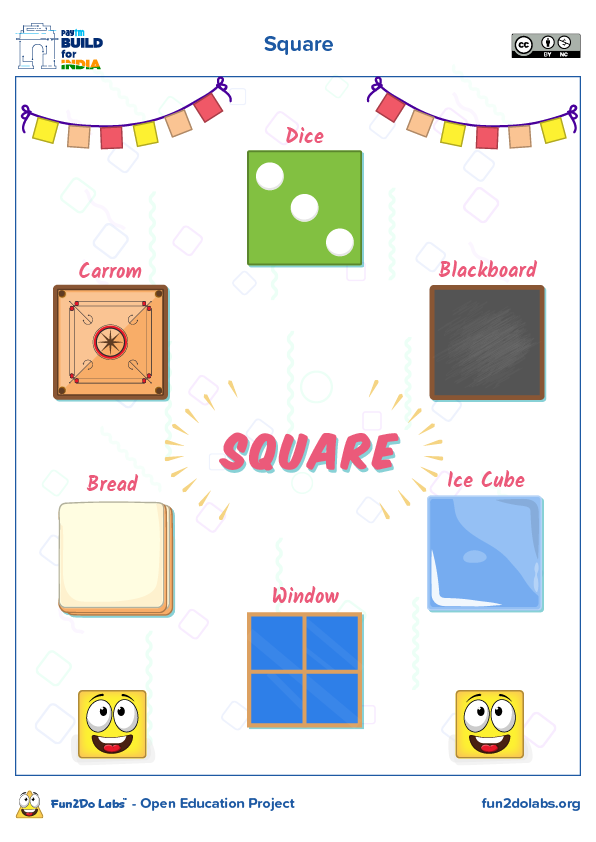 At this time, the children have a motor and tactile experience of studying the world around them. They know how to speak, they are distinguished by curiosity and the desire to explore everything, they strive for something new. That is why, for the further formation of knowledge in children, work is needed to replenish ideas about geometric shapes: a circle, a square, a triangle. In an exciting game (not on purpose!) the baby gets acquainted with the ball (ball), cube (cube).
At this time, the children have a motor and tactile experience of studying the world around them. They know how to speak, they are distinguished by curiosity and the desire to explore everything, they strive for something new. That is why, for the further formation of knowledge in children, work is needed to replenish ideas about geometric shapes: a circle, a square, a triangle. In an exciting game (not on purpose!) the baby gets acquainted with the ball (ball), cube (cube). - Four - five-year-old children, in addition to triangular, square, round shapes, recognize rectangular and oval. It is believed that at the age of 5 children already master geometry, therefore, by the next age stage, they must clearly name a circle, oval, triangle, square, rhombus, distinguish them and find them around them. Preschool children should be able to analyze and generalize the shape of objects, noting the main properties, and even solve logical problems by comparing shapes. For example, in the popular game "What are the similarities and differences between a circle and a square, a square and a rectangle, a circle and an oval?".
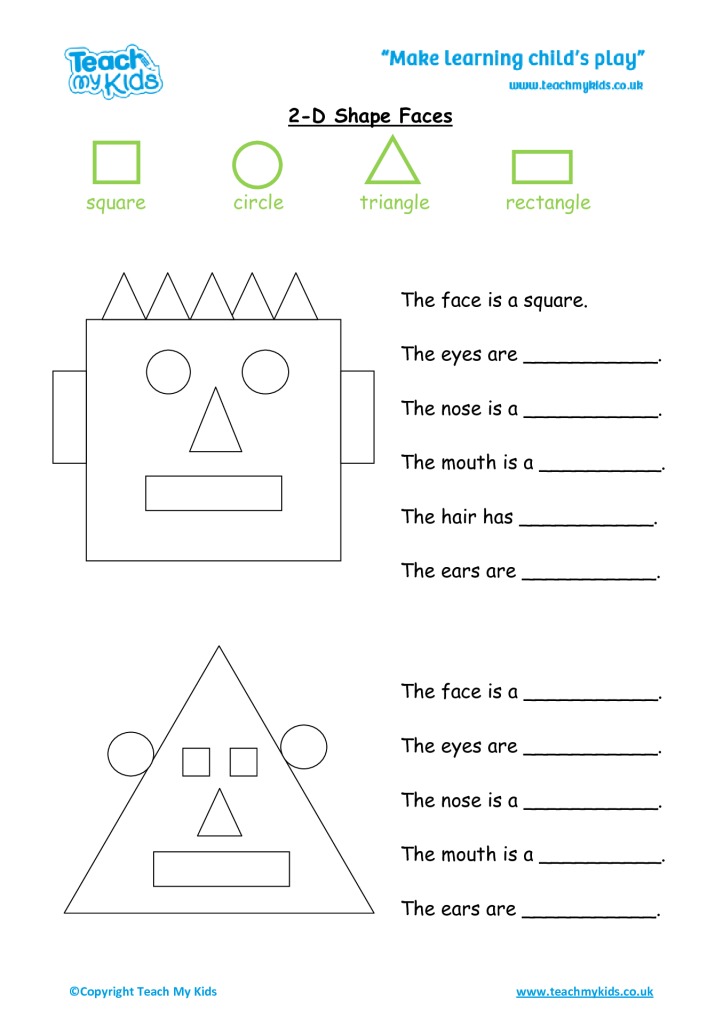
- Older preschool children already know the names of all the figures well, they are introduced to new ones: planar (polygon, trapezoid) and volumetric (ball, cube, cylinder and cone). For school education, children need to learn how to divide and assemble shapes in different ways (cutting and folding), solve problems - puzzles, for example, "Do you know how to make a square, rectangle, triangle out of two parts?", "How many squares (circles, rectangles ) on the image?".
Learning Geometric Shapes with Toddlers: Basic Rules
Important: How to teach a child to name and distinguish geometric shapes quickly and easily! To do this, you need to follow certain rules. With chaotic, inconsistent learning, the baby can confuse the figures, not see their similarity and difference.
- Teachers insist that the main rules for home schooling should be systematic, consistent, and accessible. It is not necessary to torture yourself and the child with any abstruse tasks and manuals, it is enough to use developing books, toys (designers, cubes, cars, doll utensils) and the familiar environment (furniture, household items, dishes).
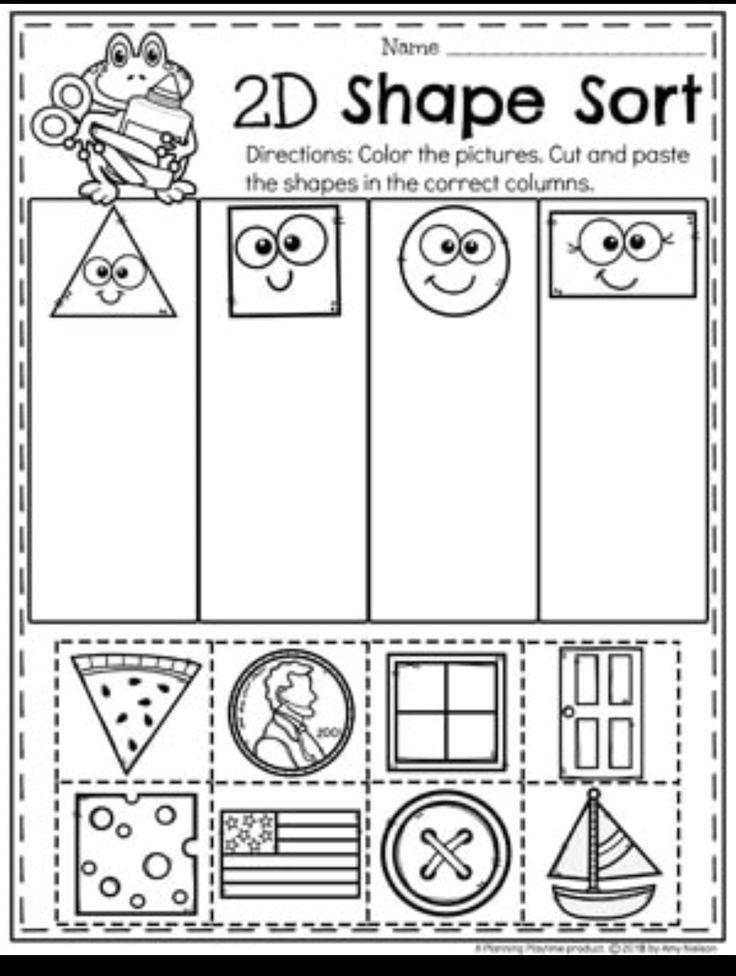
- Acquaintance with new figures must be carried out in research activities: invite the baby to feel, circle the contour with a finger, “draw” in the air, put the figures together, roll, stick them into the holes.
- A child will quickly master new material if he practically acts with it in games, creative activities, looking at and reading books, and household processes. For example, when introducing a baby to a square, you can invite him to find square objects in the environment: a seat by a highchair, a handkerchief, a face of a cube, a napkin. During a walk, ask what shape the bench in the park is, the wall of the house, mom's bag, the ball that the older guys play. At the same time, the adult himself clearly and clearly names all the geometric shapes that the baby encounters.
- It is good if adults use rhymes, fairy tales, riddles, cartoons, the heroes of which are geometric shapes, when teaching. You can not only read them, but also draw to the rhythm of the verse.
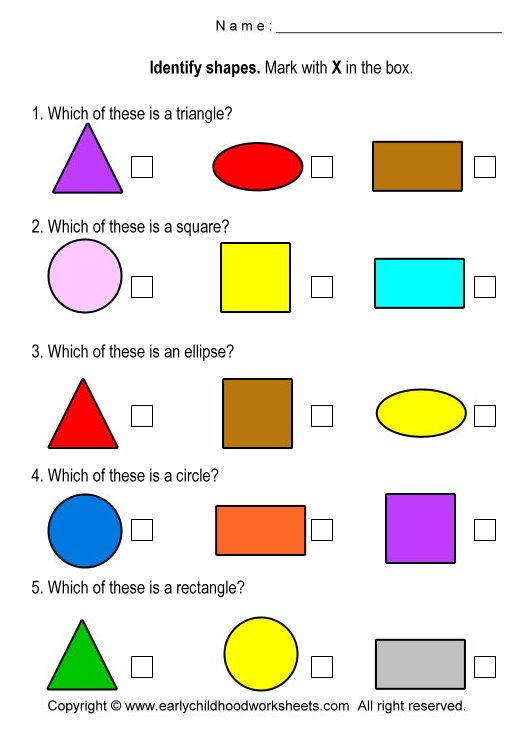 These techniques will make learning exciting, help to activate the processes of attention, thinking, speech.
These techniques will make learning exciting, help to activate the processes of attention, thinking, speech.
Riddles in verse
I have no corners and I look like a saucer, a plate and a lid, a ring and a wheel. Who am I, friends? Name me (circle).
He has been my friend for a long time, every corner in him is straight. All four sides are the same length. I am glad to present it to you. What is his name? (square).
Look at the figure and draw in the album, three angles, three sides connect with each other. It turned out not a square, but a beautiful one (triangle).
There is such a circle - a very strange appearance. The circle became flattened, it turned out suddenly (oval).
We stretched the square and presented it at a glance. Who did he look like or something very similar?
Neither brick nor triangle - became a square (rectangle).
Fairy tale "Two brothers" (an adult draws to the rhythm of the verse)
A long time ago in a dark forest in a figured hut there lived two brothers, two squares.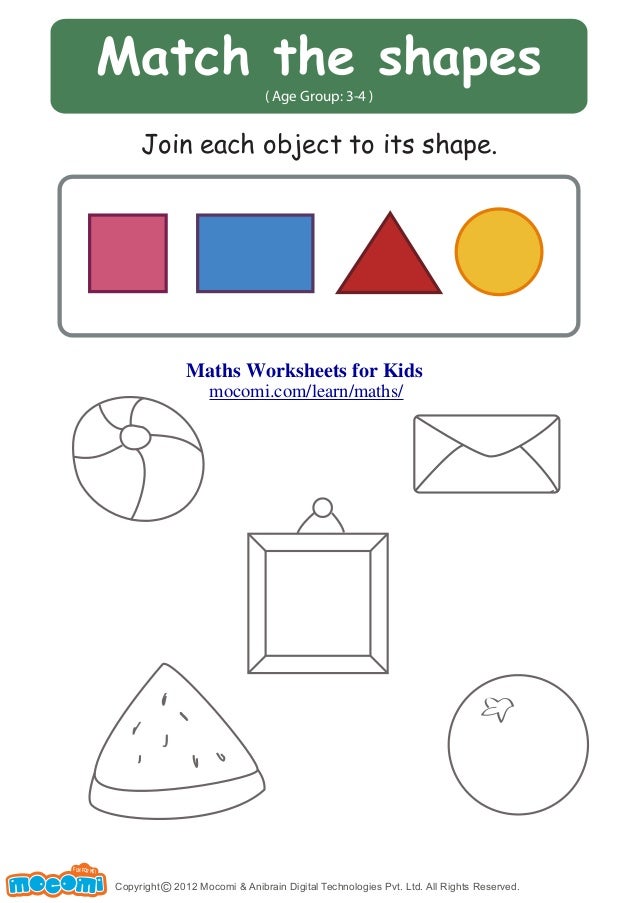 And they were twins. See for yourself:
And they were twins. See for yourself:
See in the picture - each has 4 sides, 4 corners and 4 tops.
Somehow the first square was walking among the bushes, knocking on the path with four corners.
And the animals say: “Who is this? The first square or its brother, the second square? How similar they are!
Remember in the picture: 4 sides, 4 corners and 4 tops.
The square is tired of being confused with his brother, and he decided to change, to turn into another figure.
He took scissors and cut off four corners for himself. Turned into a circle and rolled along the path.
And now the brothers live wonderfully, now it is difficult to confuse the brothers:
One rides along the paths, the other walks on four corners - four legs.
Two brothers are still friends - a circle with a square!
Important: Features of children's perception of geometric figures are not at all the same as adults. For example, an adult sees objects according to their shapes (a saucepan is a cylinder, a window is a rectangle).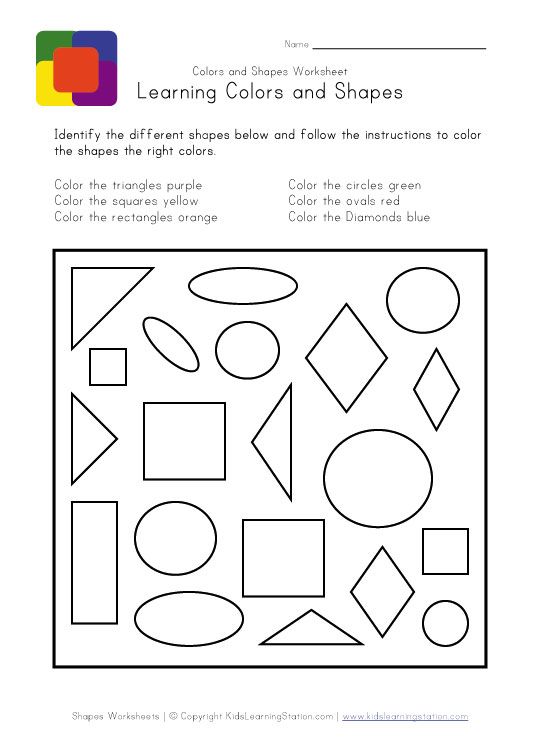 The child, on the contrary, first objects the shape (a square is a kite, a triangle is the roof of a house, a circle is a ball, several circles are glasses, beads). With proper training, he begins to abstract from objects and perceive a familiar figure in the environment, for example, a glass as a cylinder (cylindrical), a roof as a triangle (triangular), a ball as a ball (round).
The child, on the contrary, first objects the shape (a square is a kite, a triangle is the roof of a house, a circle is a ball, several circles are glasses, beads). With proper training, he begins to abstract from objects and perceive a familiar figure in the environment, for example, a glass as a cylinder (cylindrical), a roof as a triangle (triangular), a ball as a ball (round).
Playing with geometric shapes!
Teachers remind that preschoolers receive basic knowledge about geometric shapes in kindergarten, and homework is aimed at consolidating what they learn. Therefore, the best means at home will be the game, as the main activity of the kids. It is in the game that, unobtrusively, easily and quickly, the child will learn all the names of the figures, learn to compare and distinguish them. Among educational games for learning geometric shapes, board games are the most popular. They can be played in the evenings, during family leisure, made part of any home activity, entertainment.
"What's hidden"
The classic game is understandable and accessible even to a two-year-old baby. An adult lays out images of familiar figures in front of the child: a circle, a square, a triangle. Since there must be at least five cards, figures of different colors and sizes are used for the quantity, for example, two squares - large and small, two triangles - blue and yellow, one circle. Consider them with the child, discuss, make sure that he understands what figures are in front of him and can name them correctly. Then the baby closes his eyes, the adult hides one of the figures and asks what is hidden. With age, the number of figures increases, new ones are added to the old ones.
“With one word”
The game "geometric figures" is aimed at developing in children a generalization of the same type of figures. An adult needs to prepare circles, squares and triangles of different sizes and colors. The preschooler must distribute the presented figures into groups, regardless of color and size, call them a generalizing word, for example, all squares.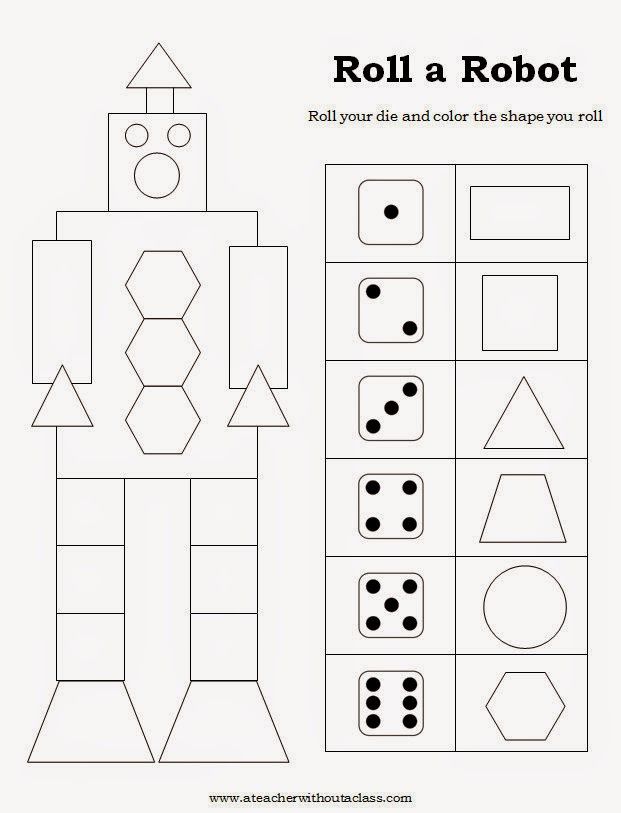 Alternatively, you can complicate tasks by offering to group shapes only by color or size.
Alternatively, you can complicate tasks by offering to group shapes only by color or size.
Wonder Pouch
Games like the "wonderful bag" are well known to children of kindergarten age. They are useful in that they give an idea of the contours of objects, teach examination by touch and exercise in distinguishing shapes. An adult prepares a bag with objects of various shapes, for example, a cube, a ball, a ball, a brick, a conical pyramid. The player examines them and names the shape of the toy they want to get. To complicate the task, older children are invited to find a specific form, for example, "Find a round toy."
“Magic Glasses”
Preliminary preparation of improvised glasses made of thick paper of various shapes: round, square. The game is interesting for all the guys, it helps to expand their understanding of geometric shapes, to find objects of a certain shape in the surrounding space. For example, a child puts on round glasses and looks for everything round around him: a plate, the bottom of a vase, a ceiling lamp by a chandelier, a carpet, grandmother's glasses.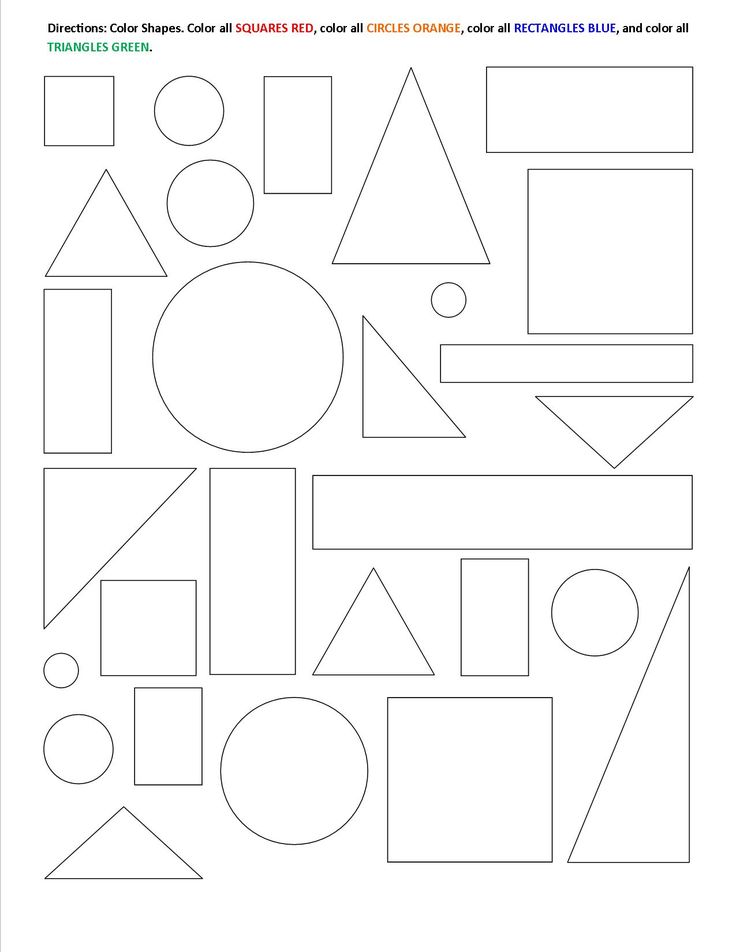 For each correct match, the player is awarded a chip, and then receives an incentive prize at the end of the game.
For each correct match, the player is awarded a chip, and then receives an incentive prize at the end of the game.
"Patches - patches"
For a lesson on fixing ideas about geometric shapes, you need a selection of pictures depicting various objects in which there are "holes" - unpainted places of different shapes, for example, a dress has a round hole, a boot has a square one. Among the different "patches" the child chooses the right one and connects it with the object. It will be interesting if an adult himself prepares images for the game, for example, cuts out things from paper (sweater, skirt, trousers, boots, hat). As a variant of the game of "patches - patches", you can purchase a didactic game of "Velcro", which are very similar in rules and content
“What's broken”
This task will help teach children to notice what form is missing in the depicted object, develops attention. For the game, you can use pictures, appliqué from cut out parts, building material.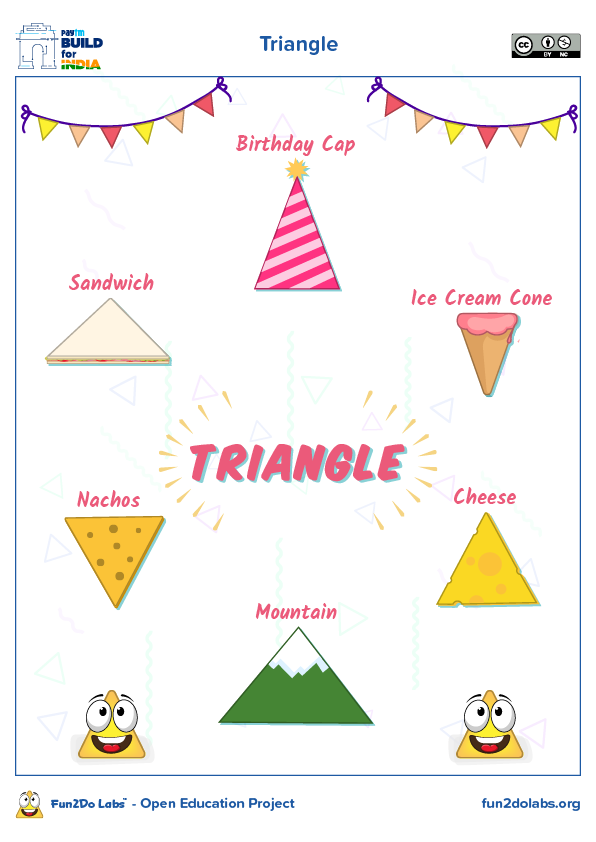 The main thing is that the object should consist of parts of a geometric shape. For example, an adult lays out the application "house", where the details are a triangle - a roof, a rectangle - a wall, a square - a window, a small rectangle - a door, a circle - a window in the attic, a quadrangle - a pipe. The child carefully examines the image and closes his eyes, the adult removes any detail, mixing it with any others. You need to guess what broke at the house and "fix" by finding the missing part. In the future, you can complicate the task by not immediately adding a certain form or removing two forms at the same time. If this is a drawn image, then the child paints on the missing details, for example, a circle is a wheel by a car, rectangles are windows by a turret.
The main thing is that the object should consist of parts of a geometric shape. For example, an adult lays out the application "house", where the details are a triangle - a roof, a rectangle - a wall, a square - a window, a small rectangle - a door, a circle - a window in the attic, a quadrangle - a pipe. The child carefully examines the image and closes his eyes, the adult removes any detail, mixing it with any others. You need to guess what broke at the house and "fix" by finding the missing part. In the future, you can complicate the task by not immediately adding a certain form or removing two forms at the same time. If this is a drawn image, then the child paints on the missing details, for example, a circle is a wheel by a car, rectangles are windows by a turret.
"Playing with sticks"
An interesting task for middle and older preschoolers, at the same time develops motor skills and the ability to make geometric shapes. If there are no counting sticks, you can use matches or toothpicks, prepare them first, cut off the sulfuric head or sharp ends so that the baby does not get hurt. Such a task can be carried out in the form of a competition during family leisure, "who will make the figure the fastest?", "Who has the most difficult figure?". Then mark the winner with a prize. At some point, it must be a child. An adult, for example, may note his original solution or a carefully and accurately laid out figure.
Such a task can be carried out in the form of a competition during family leisure, "who will make the figure the fastest?", "Who has the most difficult figure?". Then mark the winner with a prize. At some point, it must be a child. An adult, for example, may note his original solution or a carefully and accurately laid out figure.
"What was useful to the artist in the picture"
For older preschoolers, you can use the original task of looking at pictures, which not only reinforces the name of the figures, but also develops visual perception, the ability to see different forms in an unusual setting. An adult selects illustrations of the appropriate content, which the artist draws using geometric shapes. Then he invites the preschooler to look at the picture and find familiar shapes. If any of them are still unfamiliar to a preschool child, be sure to pay attention to them and tell what they are called, what objects are similar to them. Complicating the game, you can calculate how many geometric shapes it took to depict the picture.
"Geometric Lotto"
A classic task for introducing children to geometric shapes teaches them to compare the shape of an object with a geometric figure, to select images based on a standard. To get a competitive moment, interesting for the kids, it is better to play with the whole family. The rule is classic: on large cards - images of different shapes, for example, an oval, a circle, a triangle. The facilitator says the name of the item on a small card, for example, an apple, a cucumber, a handkerchief, a TV. Players look for the shape of the named object on their card and cover it with the corresponding picture. The player who quickly and correctly closes the card wins.
"Geometric Mosaic"
Such an educational game will help children to consolidate their ideas about geometric shapes. In addition, it will teach preschoolers to transform them, focusing on the standard (sample), will help creative imagination. The rules of the game are simple and accessible to children of any age, for older ones - the number of details increases, the plots become more complicated.